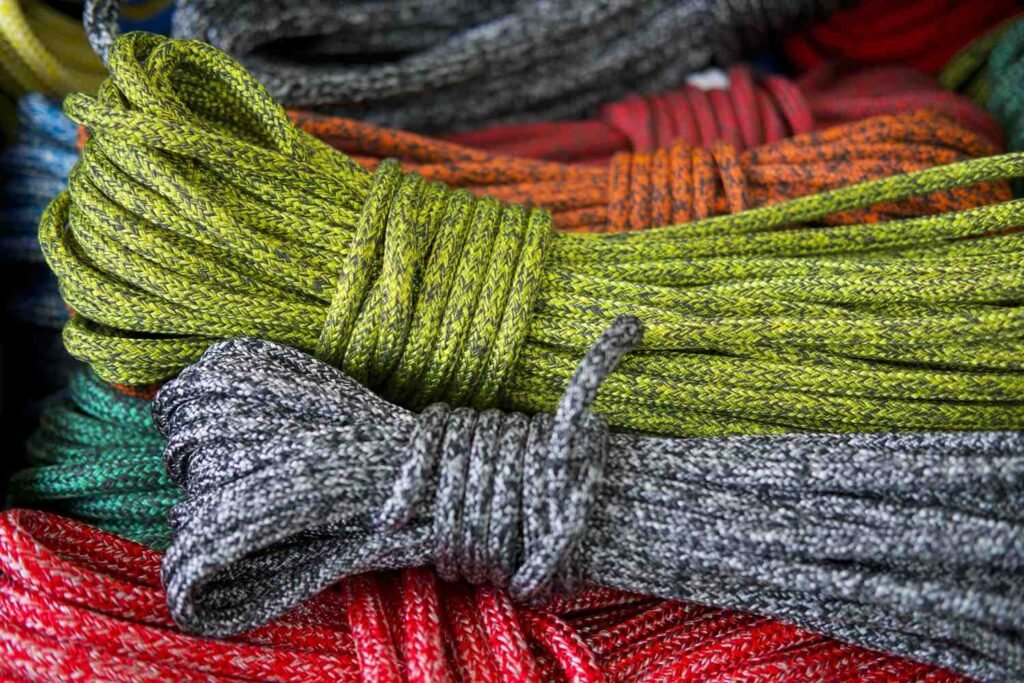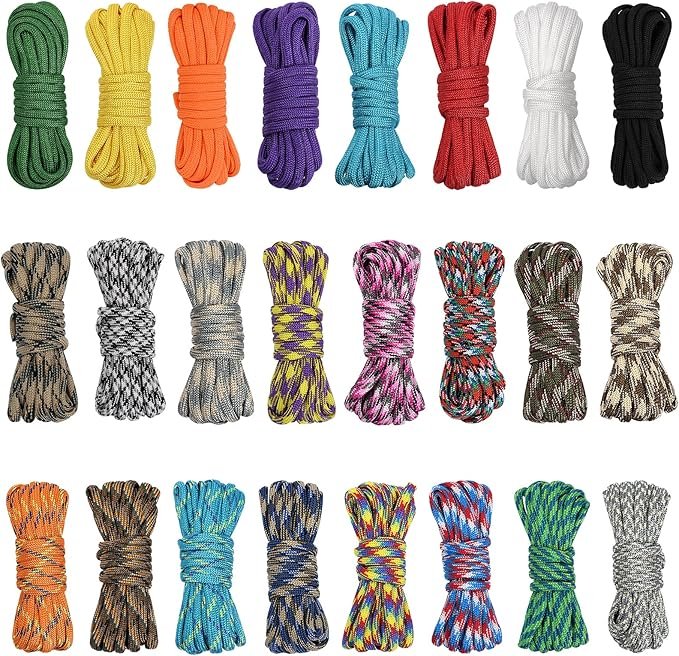
How Do You Seal Polyester Rope Ends?
Polyester rope is strong, flexible, and long-lasting, making it a great choice for boating, camping, climbing, and everyday use. However, like most ropes, polyester can start to fray at the ends when it is cut. Fraying happens when the fibers at the end of the rope loosen and unravel, making the rope weaker and harder to use.
To keep the rope strong and in good condition, it is important to seal the ends after cutting it. Sealing the ends prevents fraying, keeps the rope looking neat, and helps it last longer.
There are several easy ways to seal polyester rope ends, including melting them, using heat-shrink tubing, tying a whipping knot, or applying glue. Each method has its own advantages, and the best choice depends on how the rope will be used.
In this article, we will explore why sealing polyester rope is important, look at the best sealing methods, and provide step-by-step instructions to help you keep your rope strong and secure.
Why Does Polyester Rope Need to Be Sealed?
Polyester rope is strong, flexible, and weather-resistant, making it useful for boating, camping, climbing, and everyday tasks. However, when polyester rope is cut, the ends can start to fray, meaning the small fibers loosen and unravel.
If the rope is not sealed, the fraying can get worse over time, making the rope weaker and harder to use. Sealing the ends prevents fraying, keeps the rope strong and neat, and helps it last longer.
Let’s explore the main reasons why polyester rope needs to be sealed.
1. Prevents Fraying and Unraveling
When polyester rope is cut, the fibers at the end start to separate and fray. If the rope is used often, the fraying can spread, causing the rope to lose its shape and strength.
What Happens if the Rope Frays?
- The rope becomes weaker and may break more easily.
- Loose fibers make the rope harder to thread through pulleys or loops.
- A frayed end looks messy and unfinished.
Example: A camper cuts a new polyester rope to tie a tent. After a few days, the ends begin to fray, making it difficult to thread through tent loops.
How Sealing Helps:
- Keeps the rope strong and secure.
- Makes it easier to handle and use.
- Prevents the rope from getting worse over time.
2. Increases Rope Durability
Polyester rope is designed to be long-lasting, but if the ends are not sealed, it wears out faster. A frayed rope can become weak, especially if it is used in rough conditions like boating, construction, or outdoor sports.
What Can Damage an Unsealed Rope?
- Wind and water exposure can make fraying worse over time.
- Heavy use and pulling can make the rope unravel.
- Friction from rubbing against surfaces can cause fibers to loosen.
Example: A sailor uses a polyester rope to tie a boat. If the ends are not sealed, they become loose and frayed due to the constant movement of the waves.
How Sealing Helps:
- Keeps the rope strong even with heavy use.
- Protects the rope from wear and tear.
- Helps it last longer in tough conditions.
3. Makes the Rope Easier to Handle
A frayed rope is difficult to use because the fibers stick out and catch on objects. This can make it hard to tie knots, pull through loops, or fit into pulleys.
Problems Caused by Frayed Rope:
- Harder to tie secure knots.
- Loose fibers can get stuck in pulleys or hooks.
- The rope feels rough and uncomfortable to hold.
Example: A climber tries to thread a frayed rope through a carabiner, but the loose fibers make it hard to slide through smoothly.
How Sealing Helps:
- Creates a smooth, clean end that is easy to work with.
- Helps knots stay tight and secure.
- Makes the rope comfortable to hold and use.
4. Gives the Rope a Neat and Professional Look
A sealed rope end looks clean, smooth, and well-maintained. If the rope is used for decorations, crafts, or professional work, sealing the ends makes it look better and more polished.
Why Appearance Matters:
- A messy, frayed rope looks old and worn out.
- A sealed rope looks professional and organized.
- Important for projects where the rope is visible, such as home décor or boating.
Example: A person making DIY rope handles for a bag seals the ends to give them a neat and finished look.
How Sealing Helps:
- Makes the rope look tidy and professional.
- Keeps projects looking clean and well-made.
- Prevents loose fibers from ruining the design.

Best Methods for Sealing Polyester Rope Ends
Polyester rope is strong and long-lasting, but when it is cut, the fibers at the ends can fray and unravel. This can make the rope weaker, harder to use, and messy-looking. To keep the rope strong and neat, it is important to seal the ends properly.
There are several easy and effective ways to seal polyester rope ends. The best method depends on how the rope will be used and the tools available. Let’s explore the four best methods for sealing polyester rope ends and how to do each one correctly.
1. Melting the Ends (Heat Sealing Method)
Melting is one of the easiest and most effective ways to seal polyester rope because it is made of synthetic fibers that can melt and fuse together when heated.
What You Need:
- A lighter, candle, or torch (for small ropes).
- A soldering iron or hot knife (for thicker ropes).
- A pair of heat-resistant gloves for safety.
How to Melt-Seal Polyester Rope:
- Cut the rope cleanly using sharp scissors or a knife.
- Hold the rope end close to a flame or heat source (but not directly in the fire).
- As the fibers start to melt, rotate the rope slowly to ensure even sealing.
- Once the end is fully melted, press it gently against a metal surface or wet glove to flatten and seal it.
- Let it cool and harden before using the rope.
Why This Method Works Well:
✔ Quick and easy to do.
✔ Creates a strong, waterproof seal.
✔ Works well for all synthetic ropes, including polyester.
Safety Tips:
- Do not touch the melted rope end until it cools.
- Use gloves to protect your fingers.
- If using a lighter, work in a well-ventilated area to avoid inhaling fumes.
2. Using Heat-Shrink Tubing
Heat-shrink tubing is a plastic sleeve that is placed over the rope end and shrinks when heated, creating a tight and protective seal. This method is useful for ropes used in boating, crafts, and professional projects.
What You Need:
- Heat-shrink tubing (available at hardware stores).
- A heat gun or lighter.
- Scissors to cut the tubing.
How to Seal Rope with Heat-Shrink Tubing:
- Cut the rope cleanly with scissors.
- Slide a piece of heat-shrink tubing over the rope end.
- Leave about ½ inch of tubing past the cut end of the rope.
- Apply heat using a heat gun or lighter, moving it back and forth.
- The tubing will shrink and tighten around the rope, sealing it in place.
- Let it cool and harden before using the rope.
Why This Method Works Well:
✔ Provides a neat, professional look.
✔ Protects the rope from moisture and dirt.
✔ Prevents the rope end from becoming stiff or rough.
When to Use This Method:
- For marine ropes used in boating or fishing.
- For decorative rope projects where appearance matters.
- For handle grips on rope ladders or swings.
3. Tying a Whipping Knot (Traditional Method)
A whipping knot is a strong, tight wrap made with thread or twine around the rope end to keep the fibers from fraying. This is a traditional method used for marine ropes, climbing ropes, and decorative ropes.
What You Need:
- Waxed thread, twine, or strong sewing thread.
- A needle or small hook (optional).
- Scissors to trim excess thread.
How to Tie a Whipping Knot:
- Cut the rope end cleanly with scissors.
- Take a piece of thread about 10 times the rope’s thickness.
- Make a loop along the rope end, leaving extra thread at the bottom.
- Wrap the thread tightly around the rope (about 10-15 times).
- Take the loose end and pass it through the loop.
- Pull the starting end to tighten the loop, locking the thread in place.
- Trim any extra thread and press the knot to secure it.
Why This Method Works Well:
✔ Works for all types of rope, including polyester.
✔ Does not involve heat or glue.
✔ Creates a flexible and smooth end.
When to Use This Method:
- For marine ropes used in boating and sailing.
- For climbing ropes that need a smooth, strong end.
- For decorative ropes where a traditional look is preferred.
4. Using Rope Glue or Adhesive
Some special rope glues or fabric adhesives can be used to seal the ends of polyester rope without heat. This is a quick and easy method for light-duty ropes.
What You Need:
- Rope glue, fabric glue, or super glue.
- A small brush or applicator.
- Scissors to trim excess rope fibers.
How to Seal Rope with Glue:
- Cut the rope end cleanly with scissors.
- Apply a small amount of glue to the rope fibers at the end.
- Use a brush or your fingers to spread the glue evenly.
- Let the glue dry completely before using the rope.
Why This Method Works Well:
✔ Quick and easy—no heat required.
✔ Good for small household projects.
✔ Prevents light fraying on decorative ropes.
When to Use This Method:
- For indoor ropes used in crafts and DIY projects.
- For small ropes that are not under heavy tension.
Tips for Sealing Polyester Rope Ends Properly
Sealing the ends of polyester rope is important to prevent fraying, keep the rope strong, and make it easier to use. However, to get the best results, it’s important to seal the rope correctly.
Each sealing method—melting, heat-shrink tubing, whipping knots, and glue—requires the right tools, technique, and safety precautions. Below are the best tips to ensure that your polyester rope stays sealed and lasts a long time.
1. Choose the Right Sealing Method
Different sealing methods work better for different uses. Choosing the right method depends on how and where you will use the rope.
Which Method Should You Use?
✔ Use the melting method if you need a strong, quick seal for synthetic ropes.
✔ Use heat-shrink tubing for a clean, professional look, especially for boating and crafts.
✔ Use a whipping knot for marine and climbing ropes where flexibility is needed.
✔ Use glue or adhesive for small indoor projects where a simple seal is enough.
2. Cut the Rope Cleanly
Before sealing, the rope should be cut properly to ensure a smooth, even end. A messy cut makes sealing harder and less effective.
How to Cut Polyester Rope Correctly:
- Use sharp scissors, a utility knife, or a hot knife for a clean cut.
- Cut the rope straight across (not at an angle) to make sealing easier.
- For thicker ropes, use tape around the cut area before cutting to keep fibers together.
3. Be Careful with Heat-Based Methods
Methods like melting and heat-shrink tubing require heat sources like lighters, torches, or heat guns. Using these tools incorrectly can damage the rope or cause burns.
Safety Tips When Using Heat:
- Always hold the rope with pliers or gloves to avoid burning your fingers.
- Use a low flame and move the heat source slowly to avoid over-melting.
- Work in a well-ventilated area to avoid inhaling fumes from melted synthetic fibers.
- Keep water nearby in case of accidents.
4. Keep the Seal Strong and Secure
If the seal is weak or uneven, the rope may still fray over time. Making sure the seal is tight and secure will keep the rope strong and durable.
How to Ensure a Strong Seal:
- When melting the rope, make sure the end is fully fused together with no loose fibers.
- If using heat-shrink tubing, use even heat so the tubing shrinks tightly around the rope.
- When tying a whipping knot, pull the thread tight and secure before finishing.
- If using glue, apply a thin, even layer and allow it to fully dry before using the rope.
5. Test the Rope Before Using It
After sealing, test the rope to make sure the seal is strong enough for its intended use. This helps avoid problems like weak knots, slipping seals, or fraying.
Ways to Test the Rope:
- Pull on the rope end gently to check if the seal holds.
- Bend the rope slightly to see if the fibers stay in place.
- If using whipping or glue, try rubbing the rope to see if the seal stays intact.

Conclusion
Sealing the ends of polyester rope is important to prevent fraying, keep the rope strong, and make it easier to use. If the ends are left unsealed, the fibers can unravel over time, making the rope weaker and harder to handle.
There are several effective methods for sealing polyester rope, including:
✔ Melting the ends – A quick and strong method using heat to fuse the fibers together.
✔ Using heat-shrink tubing – Provides a neat, professional look, ideal for marine and craft projects.
✔ Tying a whipping knot – A traditional method for strong, flexible, and long-lasting seals.
✔ Applying glue or adhesive – A simple option for indoor and light-use ropes.
To get the best results, it’s important to choose the right sealing method, cut the rope cleanly, and ensure the seal is strong and secure. Taking the time to seal the rope properly will help it last longer and stay in great condition.
By following these easy sealing techniques, you can keep your polyester rope durable, fray-free, and ready for any job—whether it’s for boating, camping, climbing, or everyday use.



